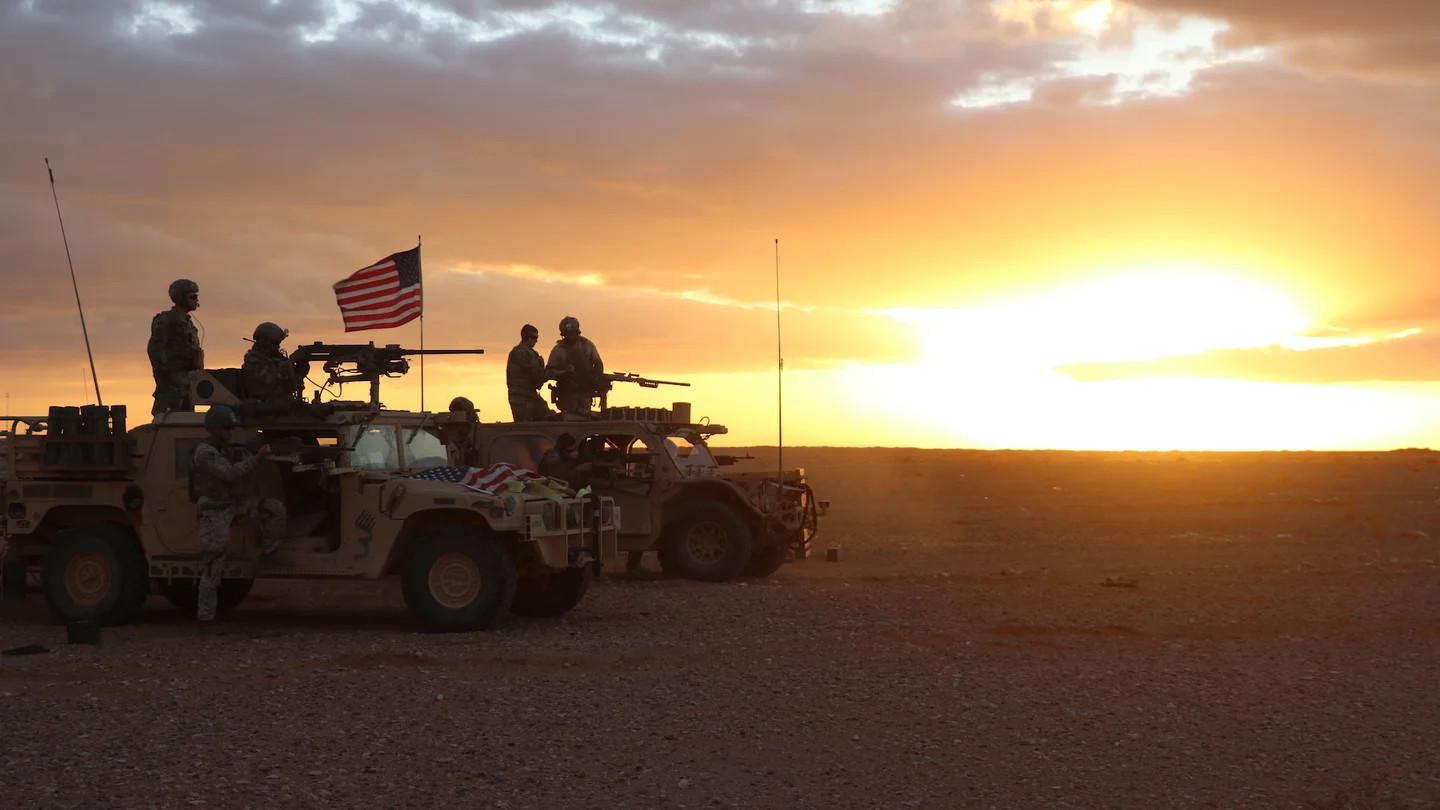
US troops launched 38 missions against ISIS in Iraq and Syria in May
With much of the world focused on the impending Ukrainian offensive and continued belligerence from China, U.S. troops continue to battle the Islamic State in Iraq and Syria long after the fall of ISIS’ caliphate.
U.S. troops conducted a total of 38 missions against ISIS in Iraq in Syria during May, according to U.S. Central Command. Twenty-one of those missions took place in Iraq and 17 were conducted in Syria, all with partner forces.
As a result of those missions, 31 suspected ISIS operatives were detained, and another eight were killed, a CENTCOM news release said. That breaks down to 20 suspected ISIS operatives detained and two killed as a result of operations in Syria, and 11 operatives detained and six killed in Iraq.
“The Coalition continues to Advise, Assist, and Enable our partners to keep pressure on ISIS and prevent them from re-establishing any type of network or effective military effort,” Army Maj. Gen. Matthew McFarlane, commander of Combined Joint Task Force — Operation Inherent Resolve, said in a statement.
Between January and April ISIS attacks declined by 68% in Iraq and 55% in Syria, McFarlane told reporters during an April 24 news conference.
“When I say attacks, a reduction in attacks, I’m talking about opportunistic engagements, so relatively small from one to a few individuals,” McFarlane said. “ISIS has failed to organize or coordinate anything more than that over the past year.”
At its height in the summer of 2014, ISIS controlled about a third of Syria and roughly 40% of Iraq, but a U.S.-led military coalition helped local forces to destroy the ISIS caliphate. In March 2019, the Syrian Democratic Forces – a Kurdish group that has partnered with U.S. troops – captured ISIS’ last enclave in Baghouz, Syria.
However, parts of both Iraq and Syria that used to be part of the ISIS caliphate remain unstable, according to the most recent report from the Lead Inspector General for Operation Inherent Resolve.
“More than 1 million Iraqis and Syrians remain displaced, and their home communities continue to experience the effects of conflict, disease, and inadequate or non-existent public service,” the report says. “In both countries, partner forces continued to demonstrate increasing, if incremental, gains in their ability to defeat ISIS independently but remained reliant on Coalition support in some areas.”
Overall, ISIS has been severely degraded and is “operating in a survival posture with a low operational pace” in Syria and Iraq, the report says.
ISIS is believed to have a total of between 5,000 and 7,000 members and supporters in both countries, half of whom are fighters, according to the report. That is down from 18,000 fighters in 2020 and 10,000 fighters in 2022.
In addition to its diminishing numbers, ISIS ‘last two top leaders were in separate incidents last year. Abu Ibrahim al-Hashimi al-Qurayshi allegedly killed himself during a February 2022 Special Operations Forces raid in Syria. His successor Abu al-Hassan al-Hashimi al-Qurayshi was killed that October by the Free Syrian Army – which is separate from the Syrian Democratic Forces.
“The DIA [Defense Intelligence Agency] assessed that the losses at least temporarily degraded local insurgent and external attack capabilities,” the inspector general’s report says. “ISIS has likely accelerated a shift toward a new generation of senior-most leaders who are probably deliberately appointed and have been groomed for senior positions.”
ISIS originally rose out of the ashes of Al-Qaida in Iraq, which had been badly mauled and driven into Syria when all U.S. troops left Iraq at the end of 2011. Since then, it has spread beyond the Middle East, and it now has a strong presence in West Africa and Afghanistan.
But Iraq and Syria remain the center of gravity for ISIS, said Bill Roggio, a senior fellow with the Foundation for Defense of Democracies think tank in Washington, D.C.
ISIS-Khorasan, the group’s branch in Afghanistan, is using the country as a logistical and coordination hub, but it does not have the manpower or resources of the remnants of the Islamic State group in Syria and Iraq, Roggio told Task & Purpose. ISIS-K is also fighting against the Taliban, which recently killed the Islamic State group leader responsible for the Aug. 26, 2021 suicide bombing at Hamid Karzai International Airport’s Abbey Gate that killed 13 U.S. service members and 170 Afghans.
“Despite their degraded capability, ISIS remains a significant threat within the region,” Army Gen. Michael “Erik” Kurilla, head of CENTCOM, said in a statement. “CENTCOM, along with our partners, is committed to the enduring defeat of ISIS.”
However, the U.S. military has limited “over-the-horizon” capabilities to monitor ISIS and al-Qaida in Afghanistan now that all U.S. troops have left the country.
Kurilla acknowledged to lawmakers during a March 16 Senate Armed Services Committee hearing that the U.S. military has faced intelligence gaps in Afghanistan since the withdrawal of all U.S. troops in 2021.
“I believe we can see the broad contours of an attack,” Kurilla told Sen. Tommy Tuberville (R-Ala.) during the hearing. “Sometimes we lack the granularity to see the full picture. And we are working to close that gap with our alternative airborne ISR [intelligence, surveillance, and reconnaissance] and some of our other intelligence that we are working to penetrate into those networks.”
Source » taskandpurpose





